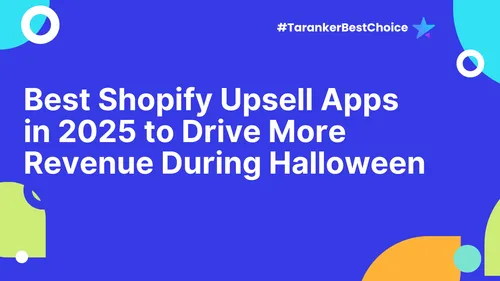In today’s digital age, the success of a website isn’t just about its design or the products and services it offers—it’s also about the experience visitors have when interacting with it. User Experience (UX) is a critical element that can make or break your site’s performance. A website with a poor UX can lead to high bounce rates, low conversions, and unhappy users, while a site with an excellent UX keeps users engaged and encourages them to return.
If you're using Wix to build your website, you're in luck! Wix offers several powerful tools and features that can help you create a seamless, user-friendly experience. Whether you’re a beginner or an experienced website owner, improving UX on Wix is both achievable and essential.
In this blog, we’ll walk you through some valuable tips and best practices to help improve the UX on your Wix site and ensure that your visitors have a positive and engaging experience.
1. Choose a Responsive, Mobile-Friendly Template

With over 50% of global web traffic coming from mobile devices, it’s essential that your website looks great and functions well on smartphones and tablets. Wix offers a variety of responsive templates that automatically adjust to different screen sizes, ensuring a smooth experience for mobile users.
Why It Matters:
-
Google uses mobile-first indexing, meaning your site’s mobile version is prioritized in search engine rankings.
-
Mobile users expect fast-loading, easy-to-navigate sites, and if they don’t get it, they’ll likely leave.
How to Improve:
-
When selecting a Wix template, make sure to choose one that’s mobile-optimized.
-
Use the Wix Mobile Editor to preview and make adjustments for mobile users. You can hide certain elements on mobile to make your site more streamlined.
2. Improve Page Load Speed

Website load speed plays a significant role in both UX and SEO. Slow-loading websites frustrate users and lead to higher bounce rates. Research shows that if a website takes longer than 3 seconds to load, 40% of visitors are likely to leave.
Wix makes it easy to speed up your website with built-in tools and features that optimize performance.
Why It Matters:
-
Faster websites create a more enjoyable user experience and are ranked better by search engines.
-
Improving load time helps retain visitors, reduces bounce rates, and increases conversions.
How to Improve:
-
Optimize images: Wix automatically resizes images, but you should also compress large files before uploading them to ensure faster load times.
-
Enable Lazy Loading: This feature ensures that images and content only load when they are visible to the user, improving initial page load speed.
-
Remove unnecessary elements: Delete unused apps, widgets, and elements that can slow down your site.
3. Simplify Navigation

Clear and intuitive navigation is one of the most important aspects of UX. If visitors can’t find what they’re looking for quickly, they’ll leave your site in frustration. Your navigation should be straightforward, user-friendly, and provide easy access to the most important pages.
Why It Matters:
-
A well-structured navigation menu reduces bounce rates and improves user engagement.
-
It enhances the overall usability of your website, making it easier for visitors to find information and take action.
How to Improve:
-
Keep the menu simple: Limit the number of items in your main menu to a few essential categories (e.g., Home, About Us, Shop, Contact).
-
Use descriptive labels: Instead of generic terms like “Services” or “Products,” use descriptive text that tells users exactly what they’ll find on that page.
-
Add a search bar: If your site has a lot of content, a search bar can help users quickly find what they need.
-
Use sticky headers: Sticky navigation bars remain visible as users scroll down the page, providing easy access to the menu at all times.
4. Make Your Website Easy to Read

Good typography is essential for a pleasant user experience. Text that’s too small, hard to read, or poorly contrasted with the background can drive users away. Clear, readable fonts, along with a good color contrast, can make a huge difference in how your users interact with your content.
Why It Matters:
-
A clean, legible layout makes it easier for users to consume your content and understand your message.
-
Well-chosen fonts and colors contribute to the overall visual appeal and professionalism of your website.
How to Improve:
-
Choose readable fonts: Use standard web fonts like Arial, Roboto, or Open Sans. Keep font sizes between 16px and 18px for body text.
-
Use contrasting colors: Ensure that there’s enough contrast between the text and background color to enhance readability.
-
Break up long paragraphs: Use bullet points, headings, and subheadings to make your content easier to scan.
-
Limit the use of font styles: Stick to a few font styles (e.g., one for headings and another for body text) to maintain a cohesive and professional look.
5. Incorporate Clear Calls-to-Action (CTAs)

A clear and compelling Call-to-Action (CTA) guides users toward taking the next step, whether it's making a purchase, signing up for a newsletter, or contacting you for more information. Without effective CTAs, users may leave your site without engaging with your content.
Why It Matters:
-
CTAs encourage users to take action, leading to increased conversions and goal completions.
-
They help users know what to do next and guide them through the customer journey.
How to Improve:
-
Make CTAs stand out: Use contrasting colors, larger buttons, and action-oriented language (e.g., "Shop Now", "Get Started", "Subscribe Today").
-
Place CTAs strategically: Position your CTAs above the fold (the area users see without scrolling) and at the end of important pages or blog posts.
-
Use concise language: Your CTAs should be simple and to the point. Avoid wordy phrases.
6. Use High-Quality Visuals
Images, videos, and graphics can elevate your website’s UX by making it more engaging and visually appealing. However, it’s important that your visuals enhance your content, rather than clutter or distract from it.
Why It Matters:
-
High-quality visuals help build trust, create a professional image, and improve overall user satisfaction.
-
Well-placed visuals can also help tell your brand story and make your content more relatable and memorable.
How to Improve:
-
Use high-resolution images: Make sure your images are sharp and clear, but be mindful of file sizes to maintain fast load times.
-
Optimize images for SEO: Use descriptive alt text and file names for all images to improve visibility in search engine image results.
-
Add videos: Videos are engaging and help users understand your product or service better. Wix makes it easy to integrate videos into your site.
7. Test and Collect User Feedback

Even with all the design and optimization steps, the best way to understand the user experience is by testing and getting feedback directly from your audience. Regular testing helps identify usability issues and areas for improvement.
Why It Matters:
-
Regular testing ensures that your site continues to meet the needs of your users and is constantly improving.
-
User feedback provides actionable insights into how visitors perceive and interact with your site.
How to Improve:
-
Use heat maps: Tools like Hotjar or Crazy Egg allow you to track where users click most often, how far they scroll, and where they drop off on a page.
-
Conduct user surveys: Ask visitors for their opinions on the site’s usability, speed, and design.
-
Perform A/B testing: Test different variations of your website to see which design or content elements perform best.
Conclusion
User experience is a critical factor in the success of any website. With Wix, improving UX is simple and achievable, thanks to its user-friendly tools and customizable features. By focusing on responsive design, fast loading speeds, clear navigation, readability, effective CTAs, high-quality visuals, and user feedback, you can create a website that not only looks great but also provides an exceptional experience for your visitors.
Start implementing these tips today and enhance your Wix website’s UX to attract and retain more visitors, boost conversions, and achieve your business goals.













